
Ever wonder how the people in contaminated regions of Eastern Europe cope today with the Chernobyl nuclear disaster of a quarter century ago?
I spent the last week of April in contaminated areas of Ukraine, as part of a group of parliamentarians and journalists commemorating the April 26, 1986 nuclear catastrophe. And I talked with many everyday citizens who live with the aftereffects of that power plant reactor explosion.
We also looked at the humanitarian efforts of Green Cross International. Green Cross conducts varied programs designed to intervene at the family level and mitigate damage being wrought by Chernobyl radiation. This organization supports community initiatives such as orphanages, therapy camps, mother-and-child clubs and micro-loans for family businesses.*
What's the Radiation Situation Now?
As I reported in my previous post, the contamination is still widespread and splotchy, impacting as many as 3.5 million people in Ukraine, 3.7 million in Belarus and 2.7 million in Russia. Of course, contamination varies from place to place, and radiation overall is decreasing; but many areas are still too "hot" for residency, farming, or any semblance of normal life. Thyroid cancer is up, and investigators suspect that other illnesses might be connected to fallout. Just as importantly, mental-health problems afflict the populations of contaminated areas.
Conversations of Hope and Concern
My purpose in writing this post was not to present another horrific portrait of devastation but to present, as best I could, a picture of day-to-day life in still-impacted communities. My exchanges with folks in contaminated areas produced mixed conversations of hope for the future and concern about medical and economic issues.
Here are some photos and information about these people and their impacted communities, 26 years (now climbing toward 10,000 days) after the worst nuclear disaster in civil history.
Let's begin with a local museum picture of the damaged nuclear reactor shortly after the accident.

The plan is to cover the entire facility in a huge concrete shield as depicted here.
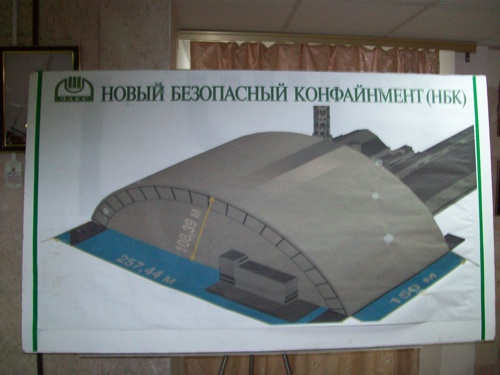
Young people parade with candles in midnight ceremonies commemorating the heroes of the 1986 disaster. 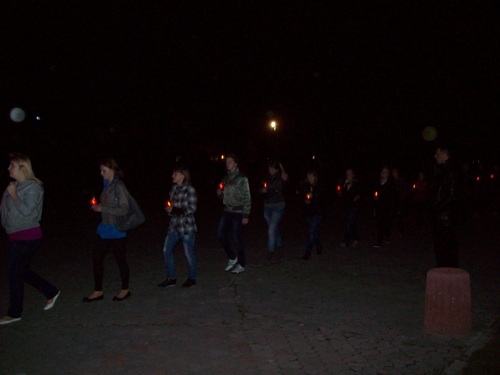
On our way to the deserted village Lokotkiv in the exclusionary zone, we chanced to meet this elderly lady, the one in dark clothing, who continued to live in the area, and still lives there, despite the accident and high contamination.
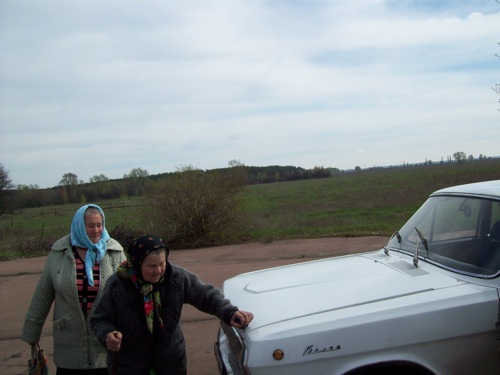
In the same area, visiting relatives take care of the graves of loved-ones.
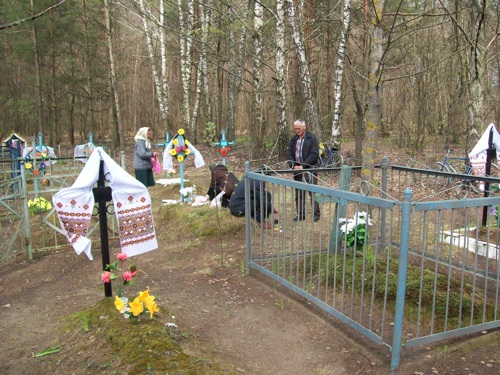
Zabirchenko Alexander is a 64-year-old Ukrainian who joined cleanup efforts in the days following the critical reactor explosion. "I later suffered serious symptoms, including heart problems, even though all my family was healthy and I had been in perfect health before then. I worry that my 7-year-old grandson, Kostia, will experience the same problems -- he also has been sick. Alexander has a right to be proud of his grandson, a bright, frisky, laughing kid to whom I gave my Jacksonville State University baseball cap.
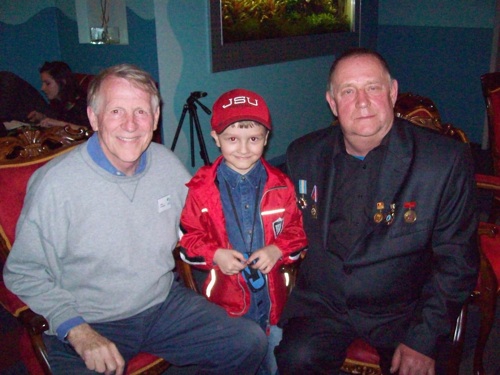
Larisa Kovalchuk, mayor in the contaminated village of Pakul, took us on a visit with some of her constituents. She told me that the Chernobyl accident had more impact on her village than did the collapse of the Soviet Union. She hopes that the Green Cross-sponsored childcare center in her area will help mothers get out and earn a living for their families. We visited the homes of some of her constituents.
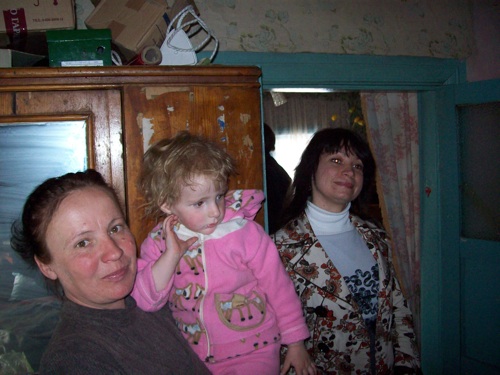
Larisa Yacoubett, a 39-year-old single mother of three shown in the above picture with the mayor, said that her sons Vladimir (18) and Dimytri (17) have weak immune systems and thyroid problems, and 2-year-old Victoria has already been hospitalized with similar ailments.
The next picture shows her sons in their yard. Even though we spent only minutes in their home, it is clear they have a hard road ahead.
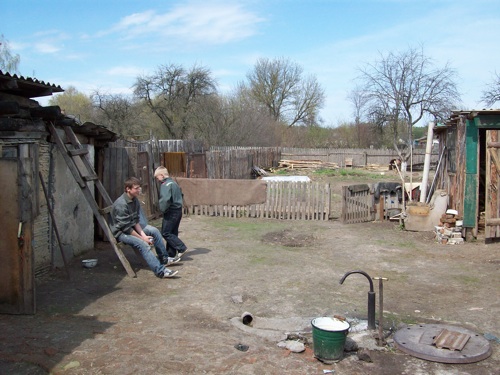
Oksana Derkach and her family, also living in the contaminated village, serve as a more hopeful example. They grow their own food and run a rabbit business that was financed by a micro-loan. This is in the back of their house, with home-grown potatoes stacked up for their own consumption.
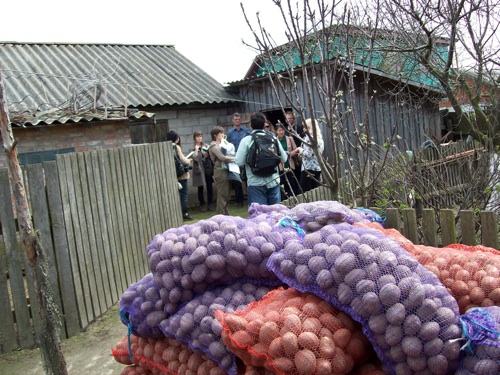
Oksana, a shy, pretty 16-year-old who earlier experienced thyroid problems but has been doing better lately, shows us one of the rabbits they've raised. She seemed like a typical teenager who said she likes to associate with her friends, enjoys school and wants to be a psychologist -- "somewhere else." Whether she realizes her dream depends on many factors outside her control, but I think she'll make it.
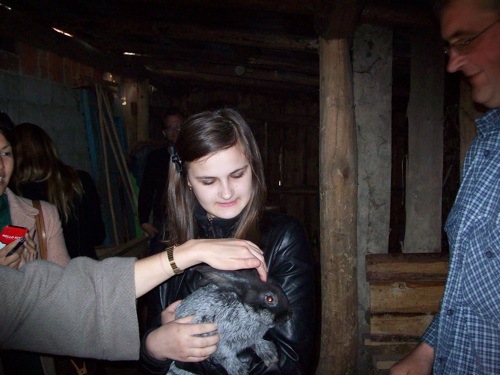
Slavutich is one of the most intriguing places I've ever visited. It was created in 15 months, totally from scratch out of the wilderness, to house displaced workers after the 1986 accident. Although it too is located in a contaminated area, it is a thriving town of about 25,000 people, most of whom work at cleaning up the reactor site. I spent an afternoon walking around town and meeting many happy young families with children.
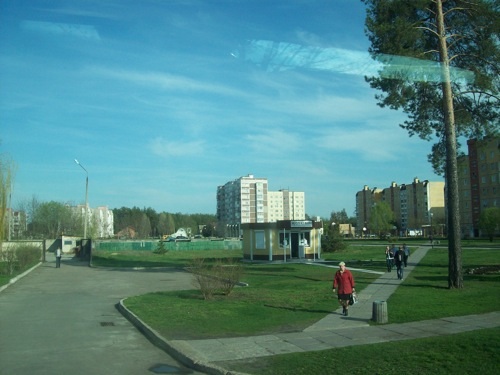
A public playground in Slavutich.
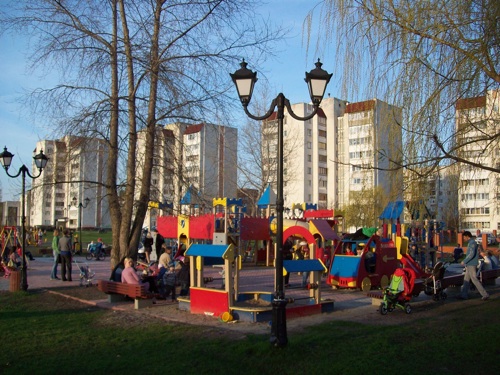
Children at a Green-Cross supported program in Slavutich.
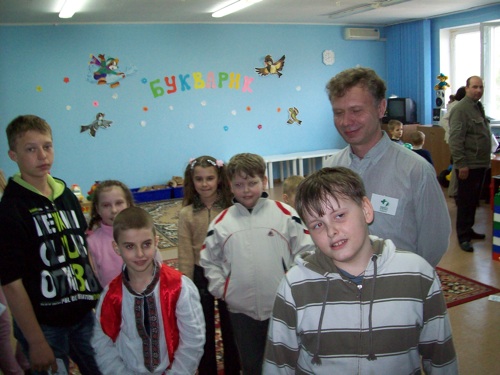
A medical person at the school talks with us about health care for the children.
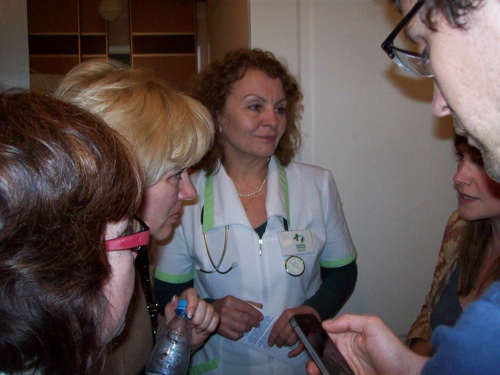
They young people gave us a musical greeting.
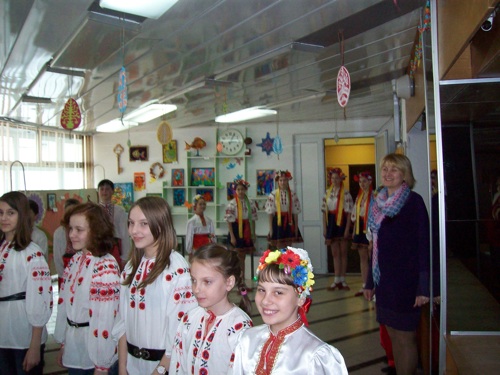
Dancing girls perform at the special event.
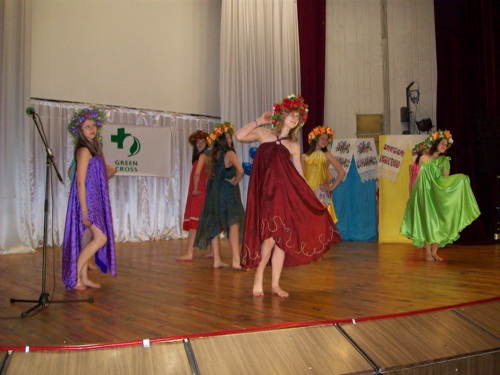
A group does a traditional Ukrainian dance.
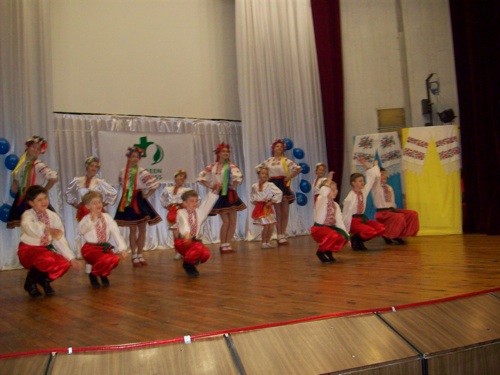
Recognition at the event for some of the heroes of 1986.
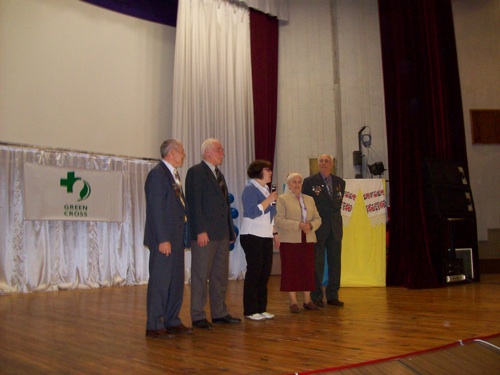
Interesting display of student art depicting "sad" experiences/memories from the 1986 disaster.
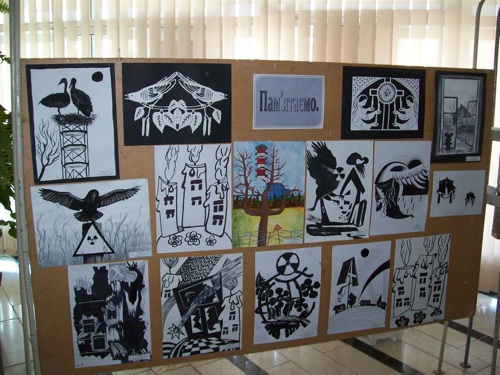
And an alternative depiction of "happy" thoughts about recovery from the disaster.
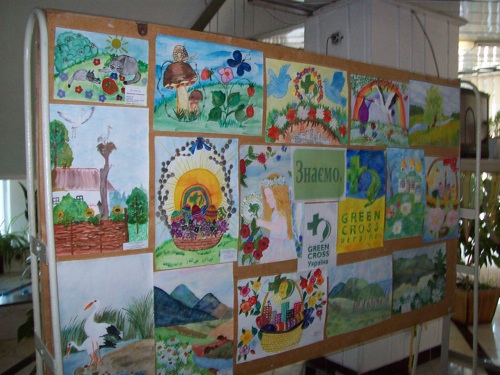
An orphanage supported by Green Cross in Slavutich.
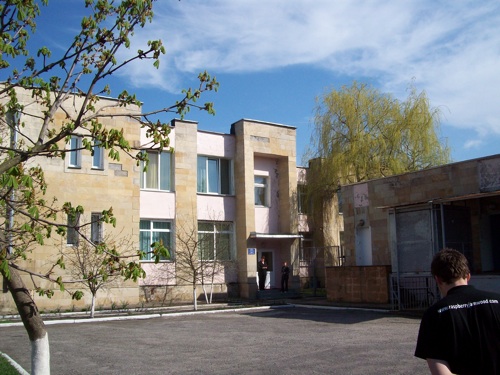
I couldn't resist snapping these beautiful faces at the orphanage.
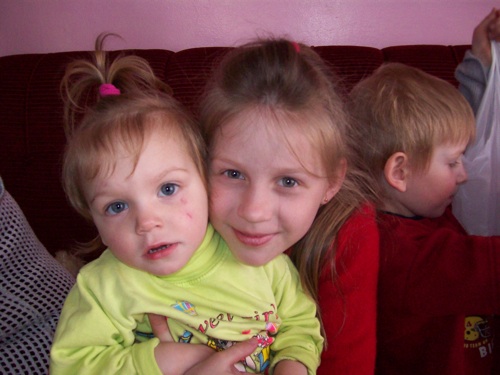
Ikuko Hebiishi, one of our team members who is a local parliamentarian in the Fukushima area, with her quilt referencing Japan's recent nuclear incident; this picture was taken in front of Saint Sophia Cathedral in Kiev.
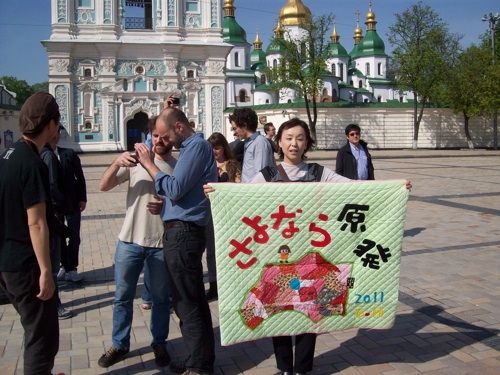
Meeting with the leadership of the Ukrainian Parliament in Kiev to talk about humanitarian efforts.
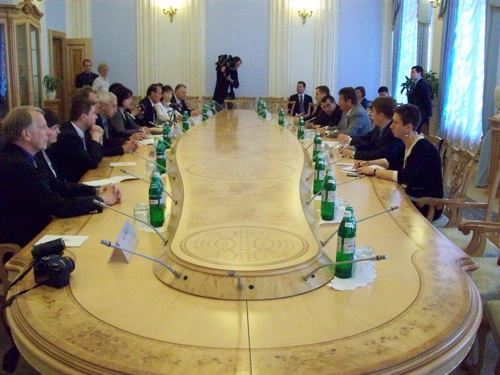
We also enjoyed great food, like this bowl of borscht.
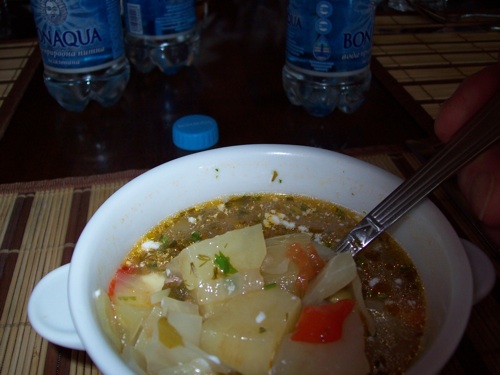
Saw the beautiful St. Catherine's Church at Chernigov.
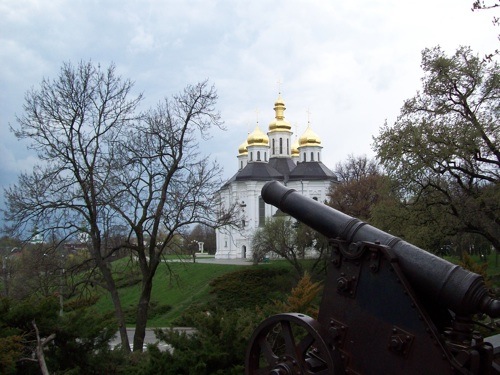
And visited bustling downtown Kiev.
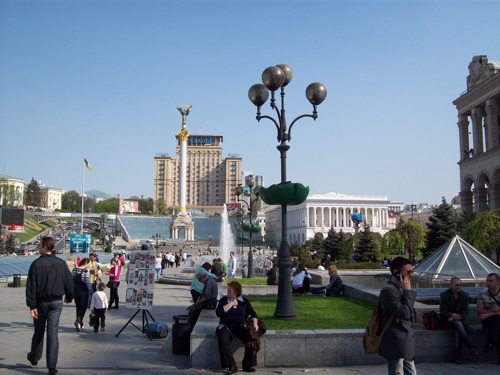
*Disclosure: I am an unpaid Senior Advisor to Green Cross International's Environmental Security and Sustainability Program